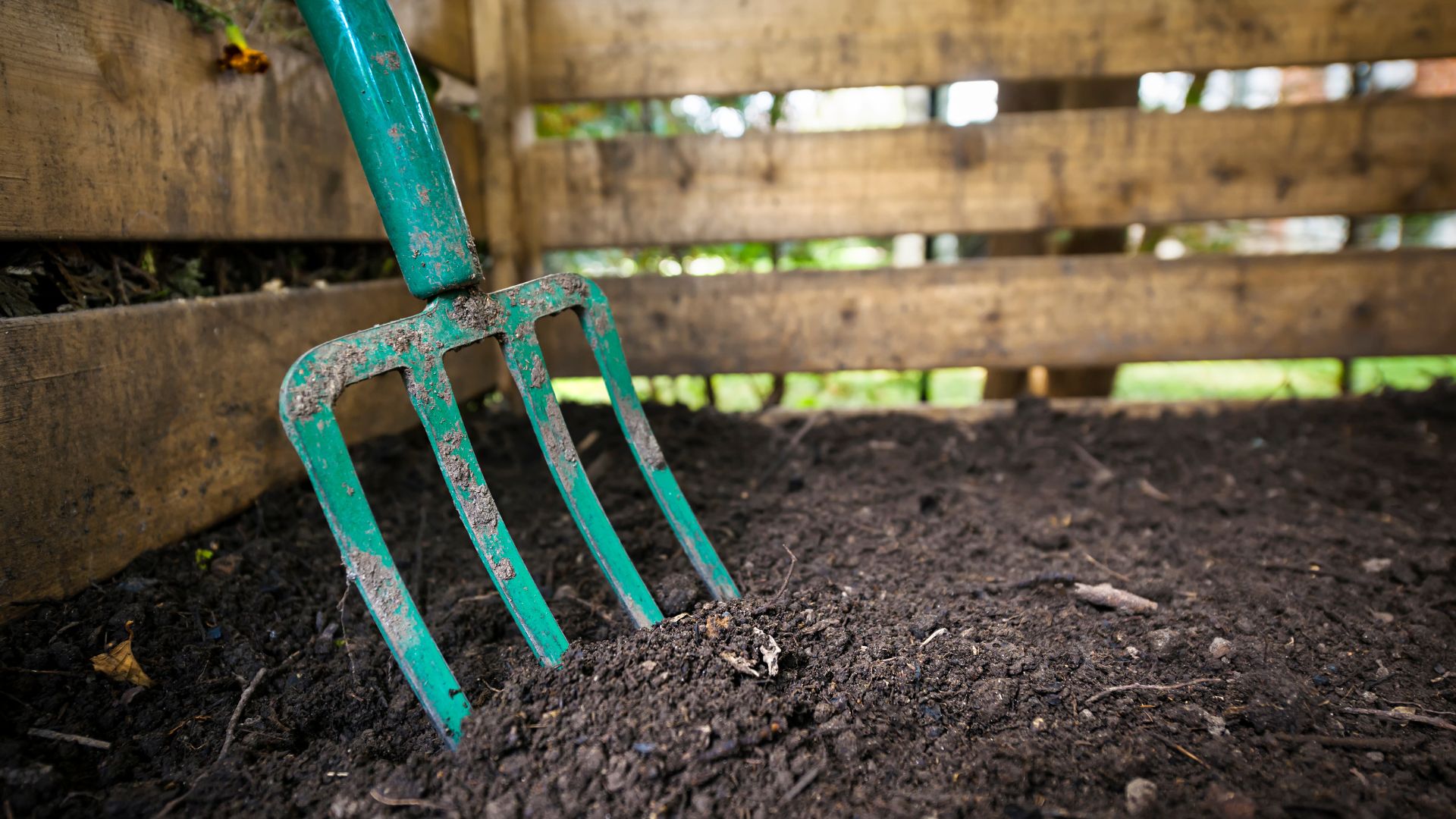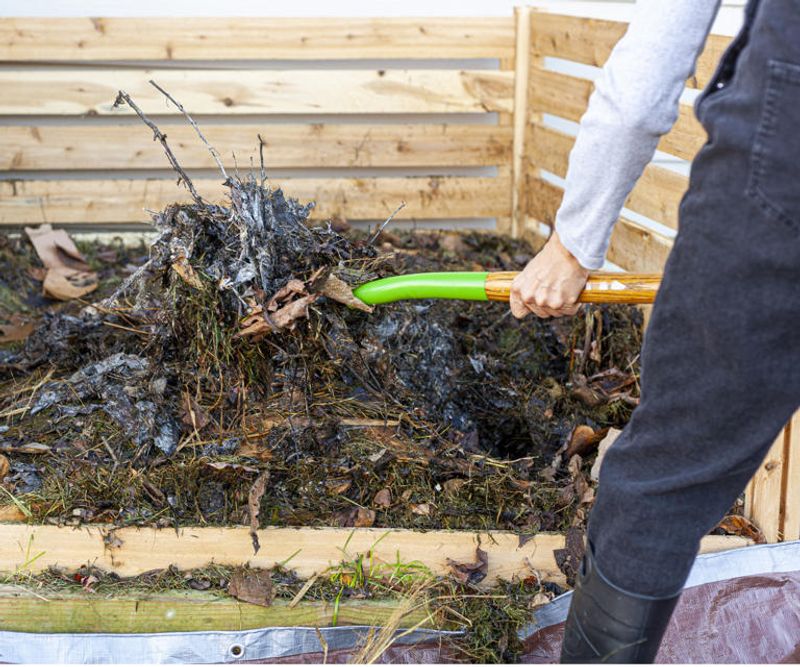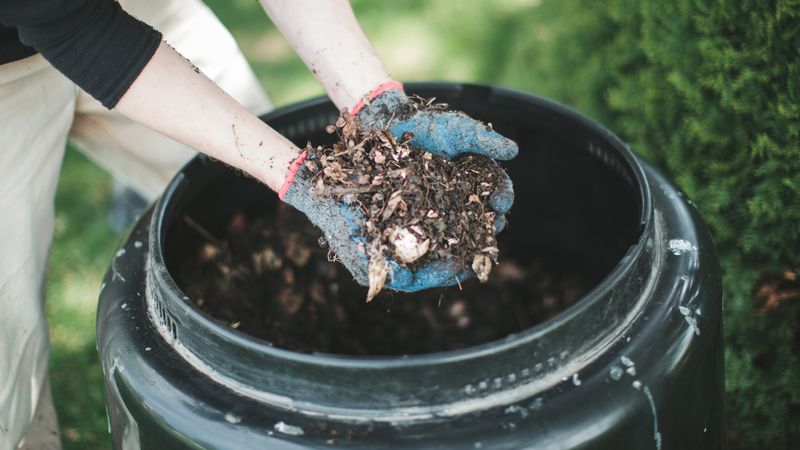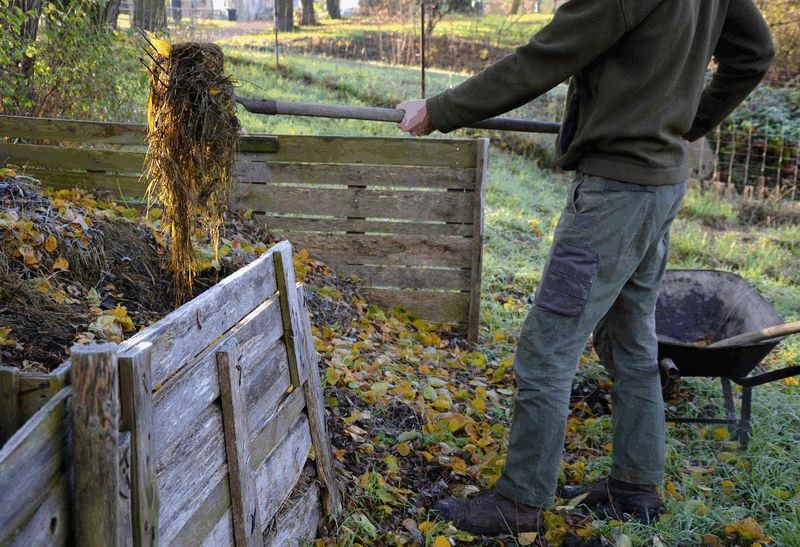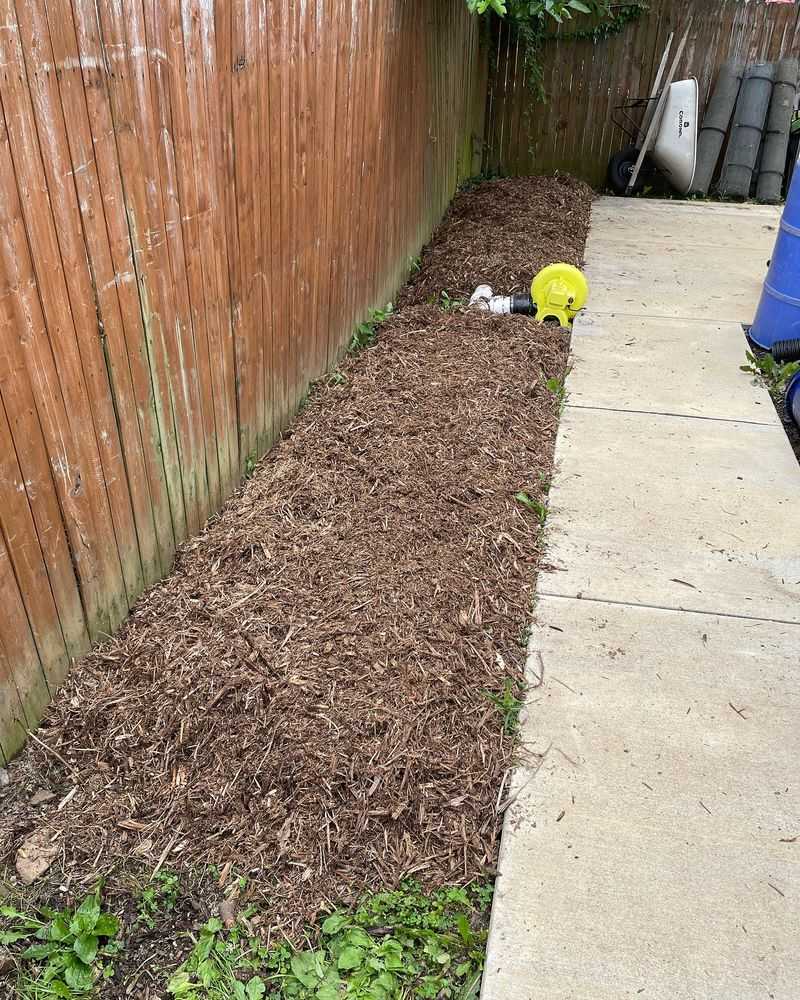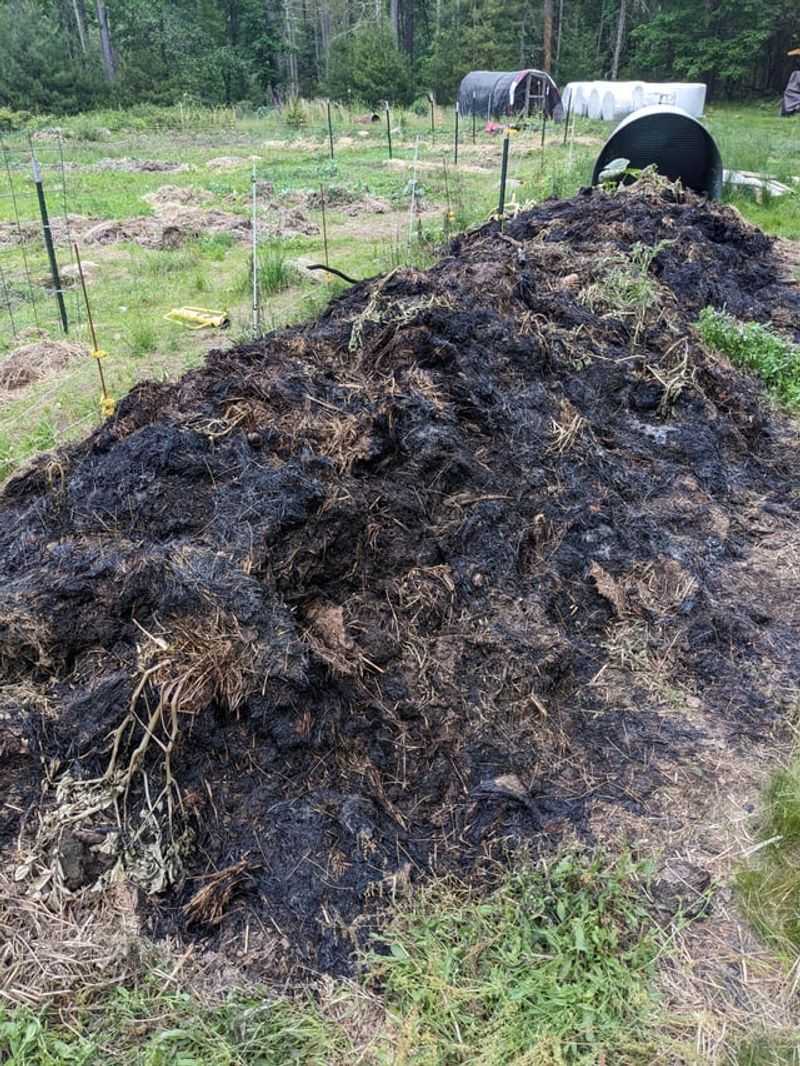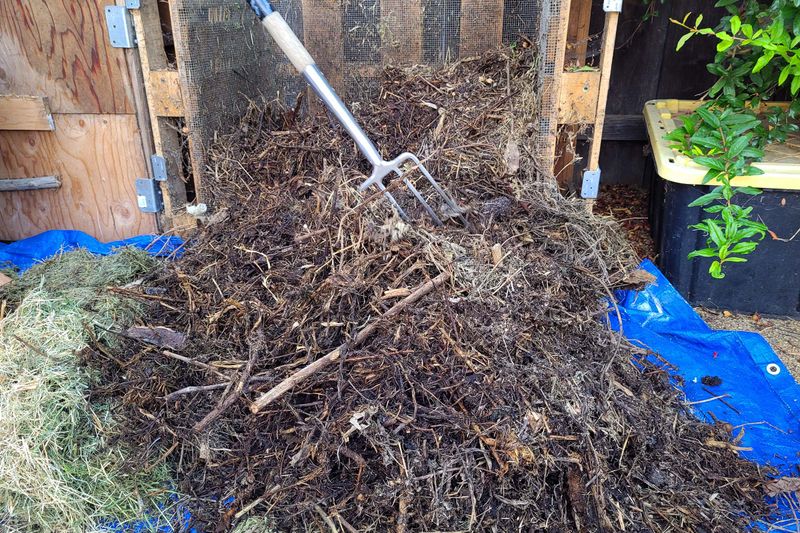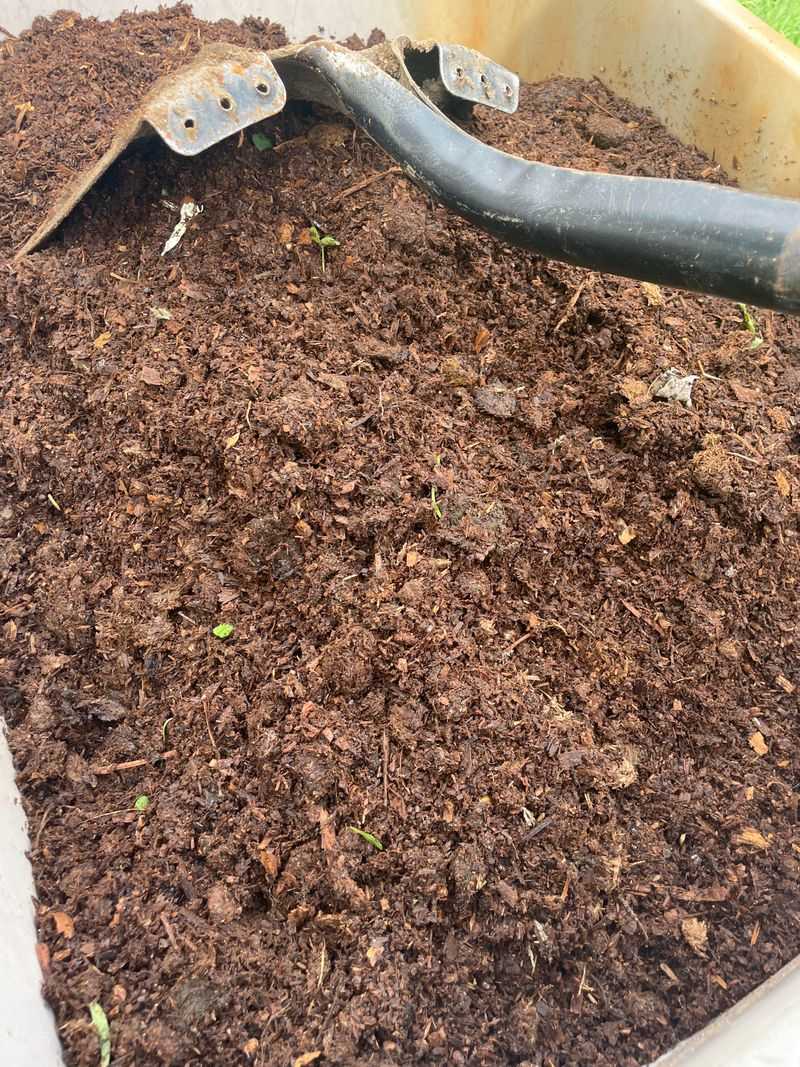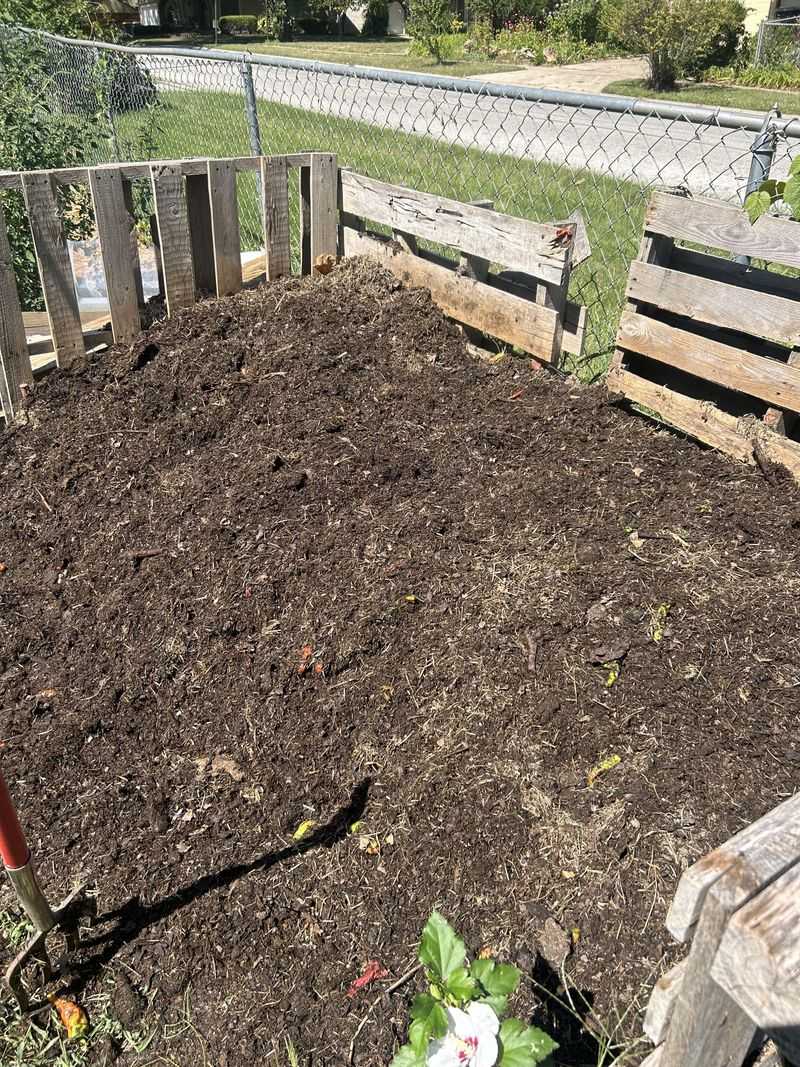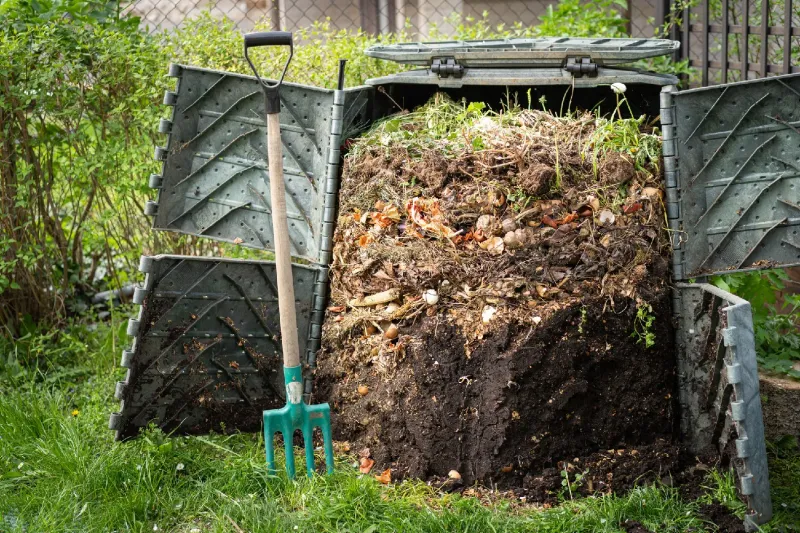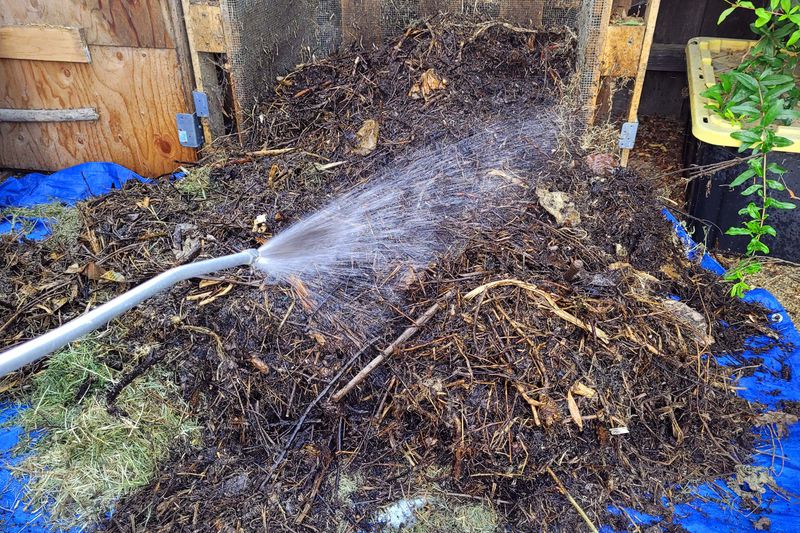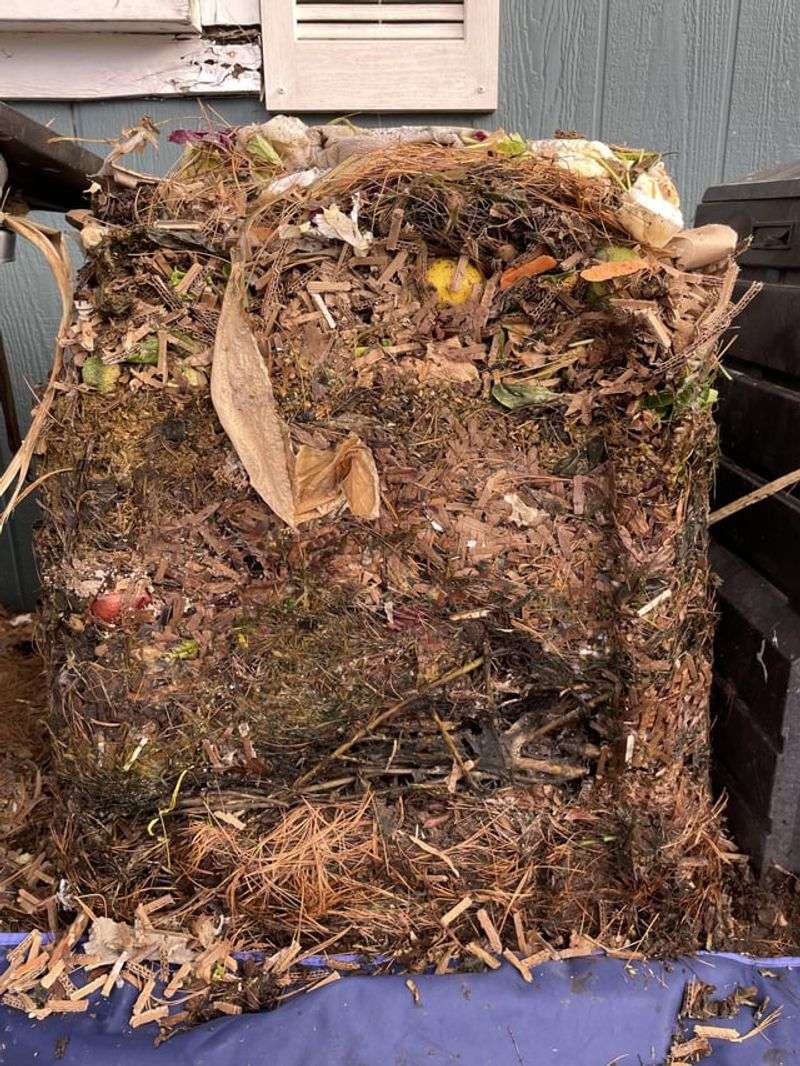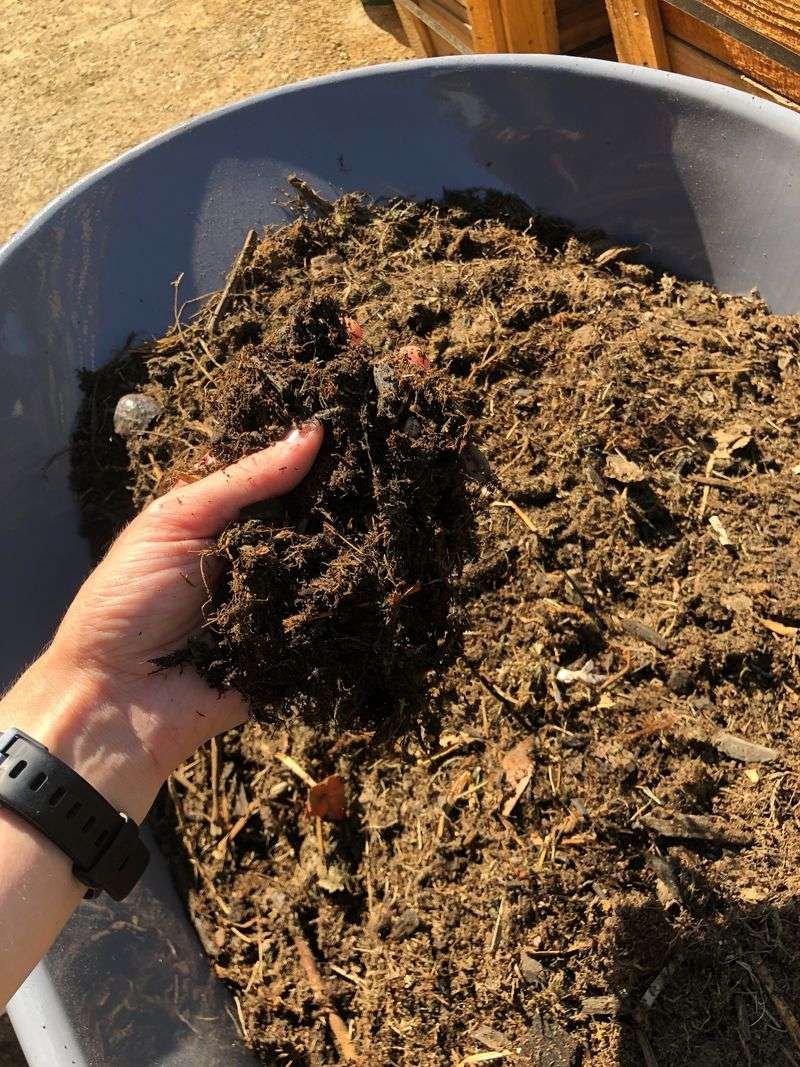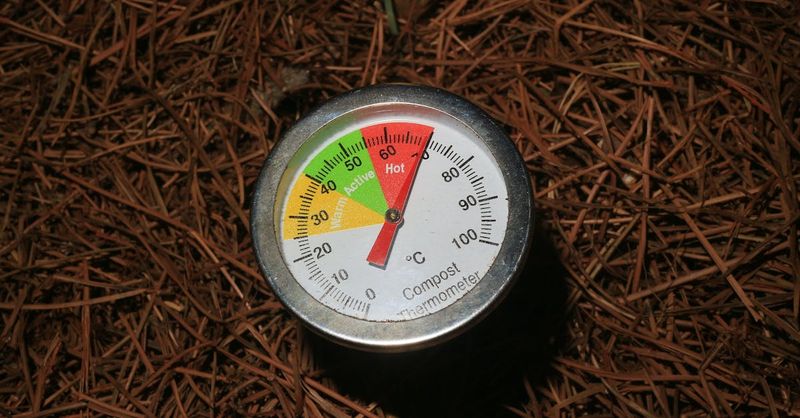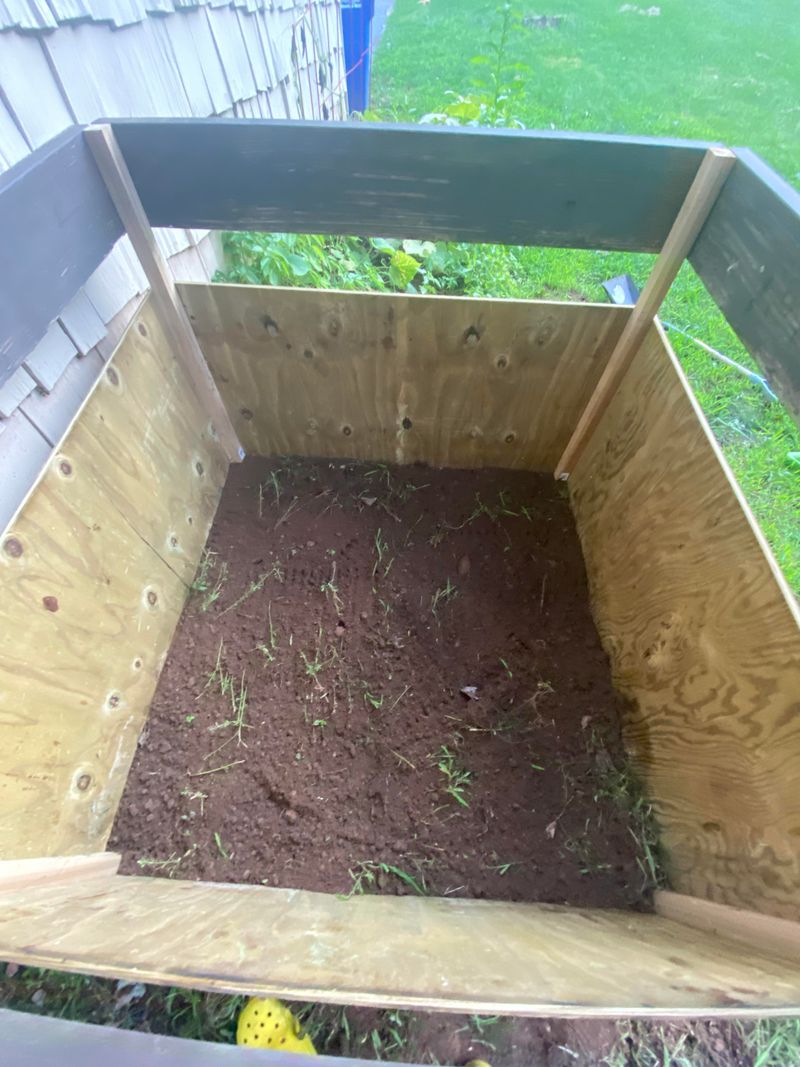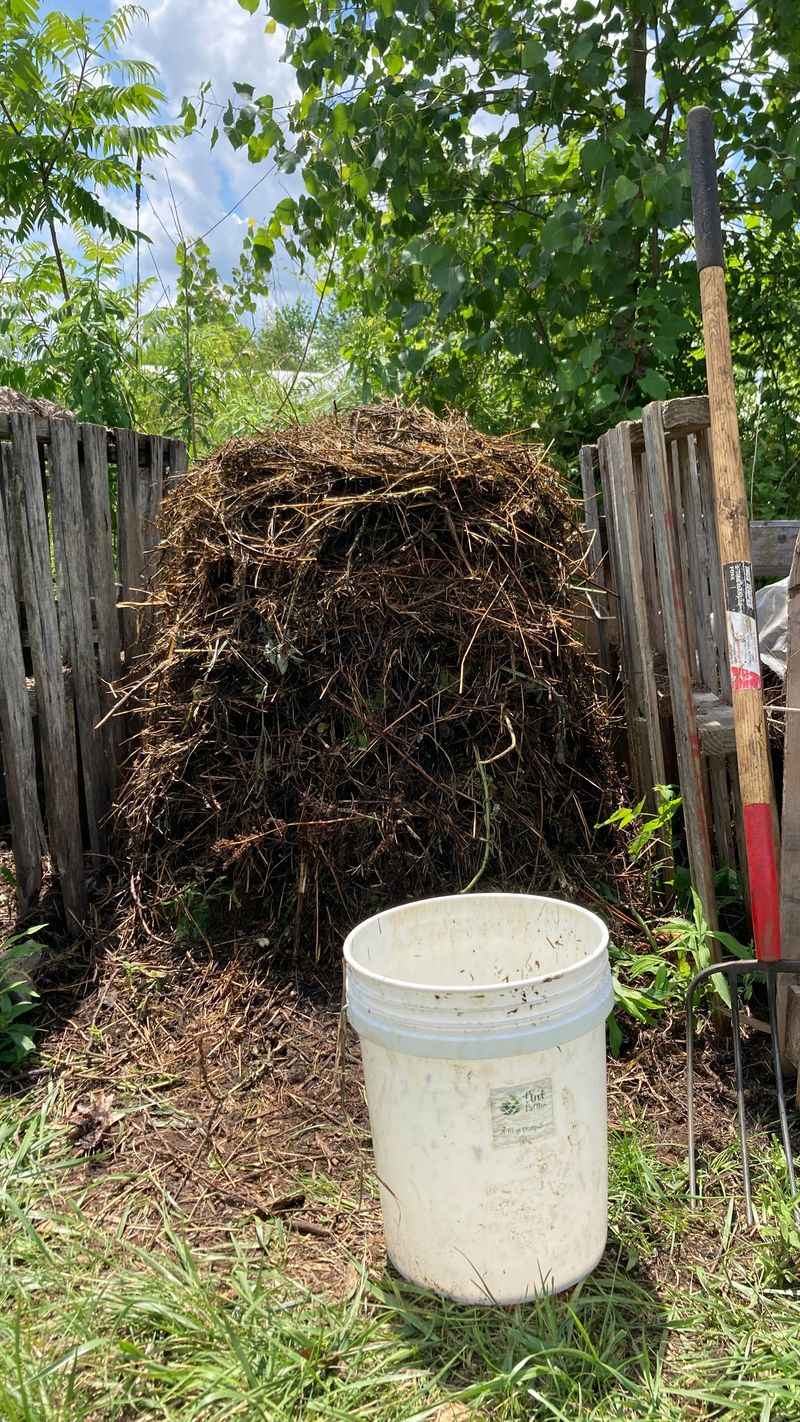Making good compost doesn’t have to be complicated, but choosing the right method can make all the difference. I’ve tried a few approaches over the years, and layering and turning have both earned their place in my garden routine.
Layering feels like building a lasagna of garden scraps, while turning keeps things moving and speeds up the process. Depending on your space, time, and how hands-on you want to be, one might suit you better than the other.
Once you get into the rhythm, you’ll start to see how your kitchen scraps and yard waste transform into rich, earthy compost—and your plants will thank you for it.
1. Effort Level Required
Creating a perfectly balanced pile takes different amounts of work depending on your approach. With layering, you simply stack materials and let nature do the heavy lifting, making it ideal for gardeners with back problems or limited time.
Turning methods demand regular physical involvement as you mix the pile every few weeks. I’ve found this hands-on approach satisfying but sometimes tiring during busy seasons when garden chores pile up.
Your available energy should guide your choice. Many weekend gardeners prefer layering during hectic months, switching to turning when they have more time to dedicate to their compost projects.
2. Decomposition Speed
Materials break down at dramatically different rates depending on your management style. The frequent oxygen exposure from turning creates a supercharged environment where microbes thrive, potentially cutting your waiting time in half.
Patience becomes your companion with layering methods. My first layered pile took nearly a year to fully transform, while my turned batches typically finish in 3-4 months when conditions are right.
Consider your timeline needs when choosing. Gardeners planning spring planting might start turning compost in winter, while those with less urgent needs can comfortably opt for the more passive layering approach.
3. Aeration Differences
Oxygen flow varies dramatically between these approaches. The physical act of turning introduces abundant oxygen throughout the entire pile, creating ideal conditions for aerobic bacteria that speed decomposition and reduce odors.
Layered systems rely on natural air channels formed by bulky materials like twigs and stems. In my experience, strategic placement of these coarser items creates pathways for air, though not as effectively as turning.
Heat distribution also changes with aeration methods. Turned piles maintain more consistent temperatures throughout, while layered systems often develop hot centers with cooler outer zones where decomposition happens more slowly.
4. Space Requirements
Your available garden area plays a crucial role in method selection. Turning requires extra working space around your bin or pile to maneuver tools and temporarily relocate materials during the turning process.
Layered systems can function in tighter spaces since they’re built once and left relatively undisturbed. My small urban garden only accommodated layering until I expanded my composting area to allow for proper turning.
Consider container options too. Many specialized tumblers make turning possible even in compact areas, while traditional layering works well in simple bins against a fence or wall where access from all sides isn’t possible.
5. Moisture Control Management
Water balance presents different challenges depending on your method. Layered systems tend to retain moisture longer between layers, sometimes becoming too wet in rainy seasons without proper drainage materials mixed in.
Turning provides regular opportunities to assess and adjust moisture levels. When my pile seemed too dry last summer, turning while adding water helped distribute moisture evenly – something impossible with static layers.
Weather patterns in your region should influence your choice. Gardeners in rainy climates might prefer turning to prevent waterlogged piles, while those in arid regions might choose layering to conserve precious moisture within the decomposing materials.
6. Temperature Regulation
Heat generation follows different patterns in each system. Turned piles typically reach and maintain higher temperatures (130-150°F) because of increased microbial activity, effectively killing weed seeds and pathogens throughout the pile.
Layered approaches create uneven heating, with the center reaching decomposition temperatures while edges remain cooler. During winter experiments, I noticed my layered pile’s center stayed warm even in freezing weather, while the outer inches slowed dramatically.
Climate considerations matter here. Northern gardeners might prefer turning methods to generate enough heat for year-round composting, while southern gardeners might choose layering to prevent excessive heat that could kill beneficial organisms.
7. Material Mixing Efficiency
Blending of greens and browns happens differently between methods. Turning creates intimate contact between diverse materials, promoting balanced decomposition where carbon and nitrogen sources interact freely throughout the entire pile.
Distinct separation characterizes layered systems, with materials primarily breaking down within their original layer. My layered bins often show visible striations of different materials even months into the process, especially when I’ve added thick layers.
Each approach affects your material preparation needs. With turning, rough chopping suffices since mixing happens mechanically. Layering benefits from finer shredding to help materials break through layer boundaries and decompose more uniformly.
8. Odor Development Differences
Smell issues vary significantly between these approaches. Regular turning introduces oxygen that prevents anaerobic bacteria from producing the sulfurous rotten-egg smells that make neighbors complain about compost piles.
Layered systems can develop odor pockets, especially in dense, wet areas where oxygen can’t penetrate. After a rainy week, my layered bin developed an unpleasant smell until I added dry leaves and poked air holes through the layers.
Location constraints might dictate your choice. Urban gardeners with close neighbors might prefer turning to minimize odor risks, while rural composters with distance from others might comfortably choose either method based on other factors.
9. Pest Attraction Potential
Unwanted visitors respond differently to each composting style. The frequent disturbance of turning discourages rodents and other creatures from making homes in your pile, while also burying food scraps that might attract pests.
Layered systems, especially those with exposed food waste, can become magnets for critters. My first layered pile became a squirrel buffet until I started burying kitchen scraps deep in the center and covering with carbon-rich materials.
Your local wildlife should influence your decision. Areas with raccoons, rats or bears might require turned systems with secure bins, while rural areas with fewer pest pressures might accommodate either approach with proper management.
10. Seasonal Effectiveness Variations
Weather changes impact these methods differently throughout the year. Summer heat makes both approaches work well, but turning creates even better results by distributing moisture that might otherwise evaporate from the pile’s surface.
Winter presents stark contrasts between methods. My turned piles maintain enough heat to continue decomposing even in freezing temperatures, while layered systems often go dormant until spring warmth returns.
Regional climate patterns should guide your seasonal strategy. Many successful composters use hybrid approaches, turning actively during fall to process summer garden waste quickly, then switching to layering during winter when outdoor work is less appealing.
11. Equipment And Tool Requirements
Necessary implements differ significantly between these approaches. Layering needs minimal equipment – perhaps just a pitchfork for adding materials and a bin or designated area to contain your pile.
Turning demands more specialized tools like compost aerators, sturdy pitchforks, or even mechanical tumblers. My investment in a quality compost fork with flat tines made turning from a dreaded chore into a manageable 20-minute task.
Budget constraints might influence your choice. Beginners often start with simple layering using existing garden tools before deciding whether to invest in specialized equipment for a turning system as their composting journey progresses.
12. Finished Compost Consistency
End product texture varies noticeably between methods. Turning creates remarkably uniform compost where original materials become unidentifiable, resulting in that coveted dark, crumbly consistency prized by gardeners.
Layered systems often produce more varied results with recognizable bits of slower-decomposing materials still visible. Last year’s layered bin yielded compost with small twigs and eggshell fragments still identifiable, requiring additional screening for certain garden uses.
Your intended application matters here. Vegetable gardens and seedling mixes benefit from the fine, uniform compost that turning produces, while general garden beds and tree mulching work perfectly fine with the slightly coarser output from layered systems.
13. Carbon-To-Nitrogen Balance Control
Nutrient ratio management approaches differ fundamentally between methods. Turning allows for adjustments throughout the decomposition process – when my pile seemed too wet and smelly (indicating excess nitrogen), I simply turned while adding dry leaves to rebalance.
Layered systems require more planning upfront to get the ratio right, as you’re essentially setting your C:N ratio when building the pile. The classic “green-brown-green-brown” layering approach attempts to establish this balance from the start.
Learning curves differ between methods. Many beginners find the immediate feedback of turning helps them understand composting principles faster, while layering might require several complete cycles before you develop intuition for proper ratios.
14. Time Investment Patterns
Work scheduling varies dramatically between approaches. Turning requires consistent, regular time commitments every 1-2 weeks throughout the composting cycle, but each session is productive and moves the process forward visibly.
Layering follows a “front-loaded” time pattern where you invest significant time building the initial pile correctly, then minimal time maintaining it. Many busy gardeners appreciate this aspect of layering, with its clear separation between setup and waiting phases.
Your personal schedule should guide this choice. Regular gardeners who enjoy frequent garden work often prefer turning’s steady rhythm, while those with unpredictable schedules might find layering’s flexibility better suits their lifestyle and availability patterns.
15. Learning Curve And Skill Development
Knowledge acquisition follows different paths with each method. Turning provides rapid feedback as you regularly observe changes, helping beginners quickly learn to recognize good compost development and troubleshoot problems before they become serious.
Layering requires patience and faith in the process, as results take longer to manifest. My first layered pile taught me to trust nature’s timeline rather than expecting quick results, a valuable lesson in garden patience.
Your gardening philosophy might guide this choice. Hands-on learners often thrive with turning’s immediate feedback loop, while those who prefer observational learning might connect more deeply with layering’s natural rhythms and less interventionist approach.

